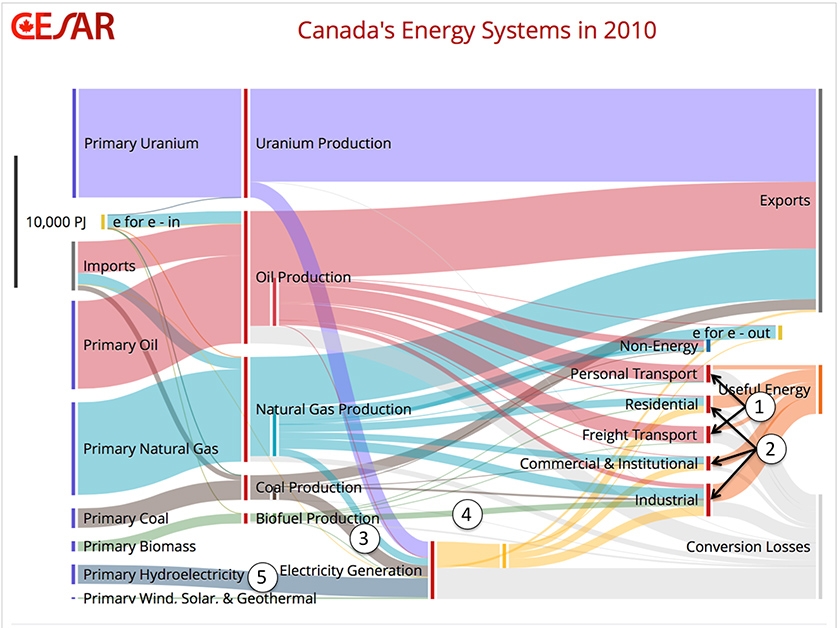Another Sankey diagram of Canada’s energy flows is featured in a blog post titled ‘Dividing the Big Picture: Visualizing Provincial Diversity’. The post appeared May 5, 2014 on the Canadian Energy Systems Analysis Research (CESAR) blog by David B. Layzell, Professor at the University of Calgary. It is a follow up to a previous CESAR blog post that showed “the big picture” for Canada (featured in a recent post here on the blog).
“The Sankey diagram below shows only the domestic portion of Canada’s energy systems. (…) It also shows how much of that demand is met by oil/petroleum (red), natural gas (blue), electricity (yellow), biomass-derived products (green) or other energy resources.”
Flows are in GJ per capita. This relative unit is different to the other national energy flow diagrams I have presented here on the blog. But it is interesting for differentiating energy consumption in the different provinces.
The article explains:
“There are significant inter-provincial differences associated with each end-use category. For example, British Columbia (BC) residents had the lowest residential energy use in the nation, at 63% of the per capita energy use in Alberta (52 GJ/capita), the national leader in this category. The balmy BC climate compared to what Albertans face each winter accounts for most of this difference. However, our model also draws on government data showing that many BC buildings tend to be better insulated than those from much colder Alberta.”
Check out all Sankey diagrams tagged ‘Canada’ here.

